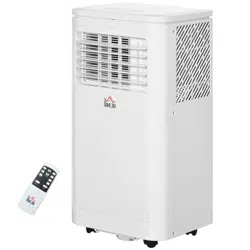Loading ...
Loading ...
Loading ...

5
● Do not apply any permanent inductive or capacitance loads to the circuit without
ensuring that it will not exceed the permissible voltage and current of the equipment.
Intrinsically safe components are the only types that can be worked on in a flammable
atmosphere. The test apparatus must be the correct rating. Replace components only
with parts specified by the manufacturer. Parts, not specified by the manufacturer, may
ignite the refrigerant, causing a fire or explosion hazard.
● Check that cabling is not subject to wear, corrosion, excessive pressure, vibration, sharp
edges or any other adverse environmental effects. Also check for ageing or continual
vibration from sources, such as compressors and fans.
● Never use sources of ignition when searching for refrigerant leaks, such as halide
torches or any other naked flames.
● Electronic leak detectors can be used to detect flammable refrigerants however, the
sensitivity may not be adequate or may need recalibration (detection equipment must be
calibrated in a refrigerant-free area). Ensure the detector is not a potential source of
ignition and is suitable for the refrigerant used. Set the leak detection equipment at a
percentage of the LFL of the refrigerant – it must be calibrated to the right refrigerant
and the appropriate percentage of gas (25% maximum) is confirmed.
● Leak detection fluids are suitable for use with most refrigerants however, the use of
detergents containing chlorine must be avoided - the chlorine may react with the
refrigerant and corrode the copper. If a leak is suspected, all naked flames must be
extinguished. If a leakage is found that requires brazing, all of the refrigerant shall be
recovered from the system or isolated (by shutting off valves). Oxygen free nitrogen
(OFN) shall be purged through the system both before and during the brazing process.
● When breaking into the refrigerant circuit to make repairs – or for any other purpose –
conventional procedures shall be used. However, it is important that best practice is
followed since flammability is a consideration. This procedure must be followed:
- Remove refrigerant.
- Purge the circuit with inert gas.
- Evacuate.
- Purge again with inert gas.
- Open the circuit by cutting or brazing.
● The refrigerant charge shall be recovered into the correct recovery cylinders. The
system shall be 'flushed' with OFN to render the unit safe. This process may need to be
repeated several times. Compressed air or oxygen shall not be used for this task.
Flushing shall be achieved by breaking the vacuum in the system with OFN and
continuing to fill until the working pressure is achieved, then venting into the
atmosphere, and finally pulling down to a vacuum. This process shall be repeated until
no refrigerant is within the system. When the final OFN charge is used, the system shall
be vented down to atmospheric pressure to enable work to take place. This operation is
absolutely vital if brazing operations on the pipe-work are to take place. Ensure the
outlet for the vacuum pump is not close to any ignition sources and there is proper
ventilation.
● In addition to conventional charging procedures, the following requirements shall be
followed. – Ensure that contamination of different refrigerants does not occur when
using charging equipment. Hoses or lines shall be as short as possible to minimise the
amount of refrigerant contained in them.
– Cylinders shall be kept upright.
– Ensure the refrigeration system is earthed prior to charging the system with refrigerant.
– Label the system when charging is complete (if not done already).
– Take extreme care, ensuring you do not overfill the refrigeration system.
● Before recharging the system, pressure test it with OFN. Conduct a leak test when
charging is complete - do this before commissioning. Before leaving the site, conduct a
follow up leak test.
Loading ...
Loading ...
Loading ...
